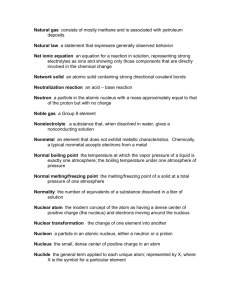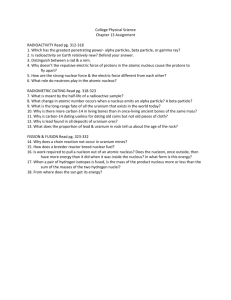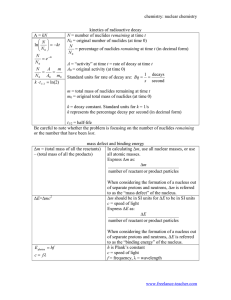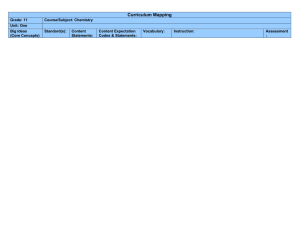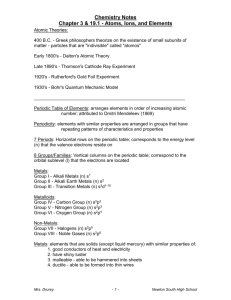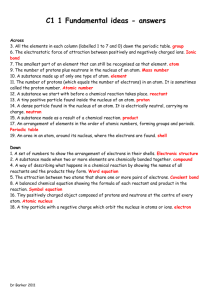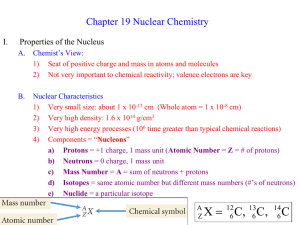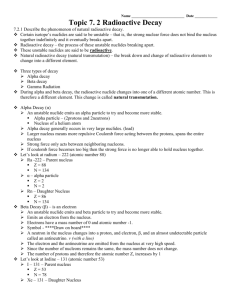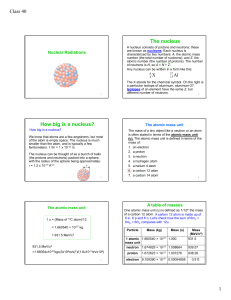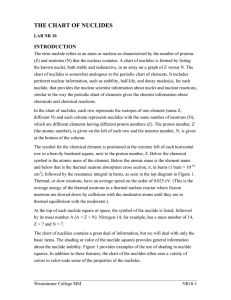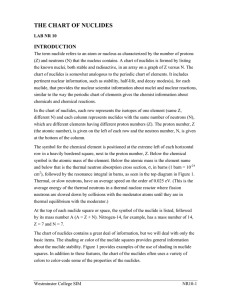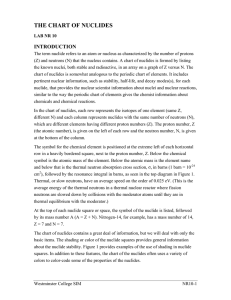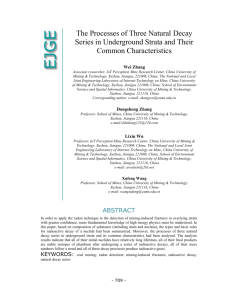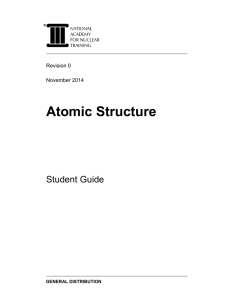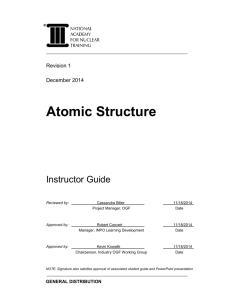Nuclear chemistry library
advertisement
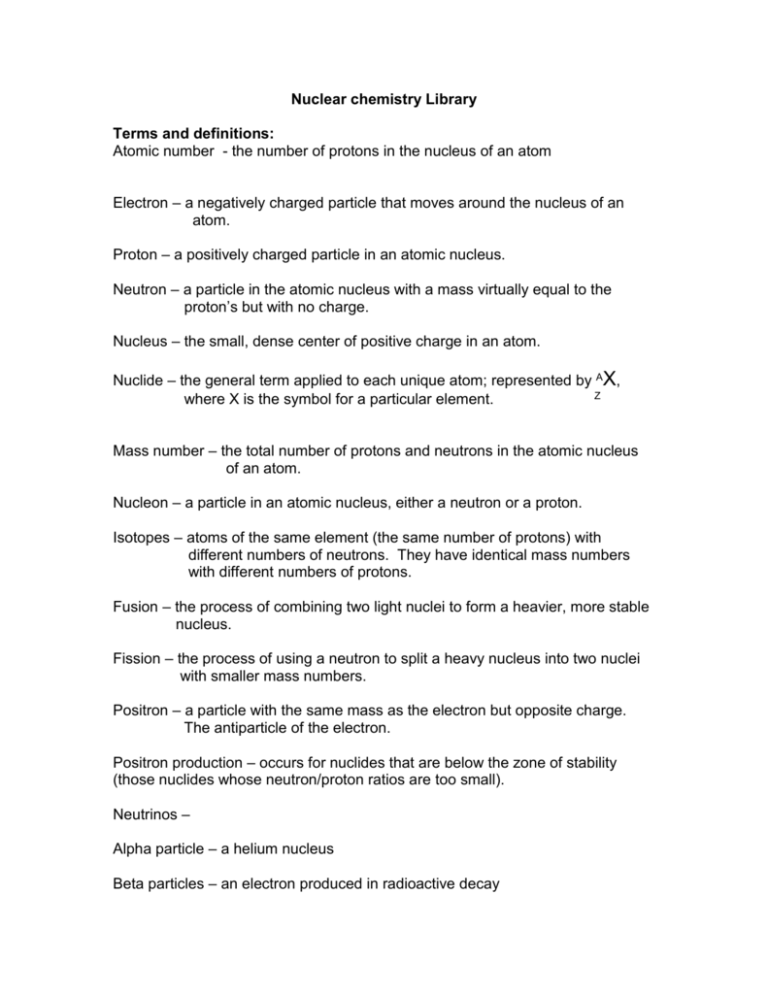
Nuclear chemistry Library Terms and definitions: Atomic number - the number of protons in the nucleus of an atom Electron – a negatively charged particle that moves around the nucleus of an atom. Proton – a positively charged particle in an atomic nucleus. Neutron – a particle in the atomic nucleus with a mass virtually equal to the proton’s but with no charge. Nucleus – the small, dense center of positive charge in an atom. Nuclide – the general term applied to each unique atom; represented by AX, Z where X is the symbol for a particular element. Mass number – the total number of protons and neutrons in the atomic nucleus of an atom. Nucleon – a particle in an atomic nucleus, either a neutron or a proton. Isotopes – atoms of the same element (the same number of protons) with different numbers of neutrons. They have identical mass numbers with different numbers of protons. Fusion – the process of combining two light nuclei to form a heavier, more stable nucleus. Fission – the process of using a neutron to split a heavy nucleus into two nuclei with smaller mass numbers. Positron – a particle with the same mass as the electron but opposite charge. The antiparticle of the electron. Positron production – occurs for nuclides that are below the zone of stability (those nuclides whose neutron/proton ratios are too small). Neutrinos – Alpha particle – a helium nucleus Beta particles – an electron produced in radioactive decay Gamma ray – a high-energy photon Half-life – (of a radioactive sample) – the time required for the number of nuclides in a radioactive sample to reach half of the original value. Critical mass – the mass of fissionable material required to produce a selfsustaining chain reaction. Nuclear transformation – the change of one element into another. Rad – a unit of radiation dosage corresonding to 10-2 J of energy deposited per kilogram of tissue. Radioactive decay – (radioactivity) the spontaneous decomposition of a nucleus to form a different nucleus. Radiocarbon dating (carbon-14 dating) – a method for dating ancient wood or cloth based on the rate of radioactive decay of the nuclide 14C. Radiotracer – a radioactive nuclide, introduced into an organism for diagnostic purposes, whose pathway can be traced by monitoring its radioactivity. Reference Information: Decay rate of fresh cut wood gives 13.6 counts per minute Formulas: t1/2 = 0.693/k Rate = kN ln (N/No) = -kt ln (N/No) – (0.693/t1/2)t E=mc2 Tables: (WILL HAND DELIVER YOU A COPY OF EACH OF THESE …MY SCANNER ISN’T WORKING) Emissions from nuclear reactions (page 3-26) Properties of subatomic particles (page 3-15) Nuclear binding energy vs. atomic number (decisions about fusion or fission) Nuclides and corresponding half lives Radioactive nuclides and half lives for medical applications (Zumdahl) A history of major evolutionary events on earth Simulations to be able to access: Geiger counter simulator that provides t time and A (activity…counts per 30s) Geiger counter that provides a read out of counts per minute Graphs as options to obtain and interpret data (decay curves, half lives)

